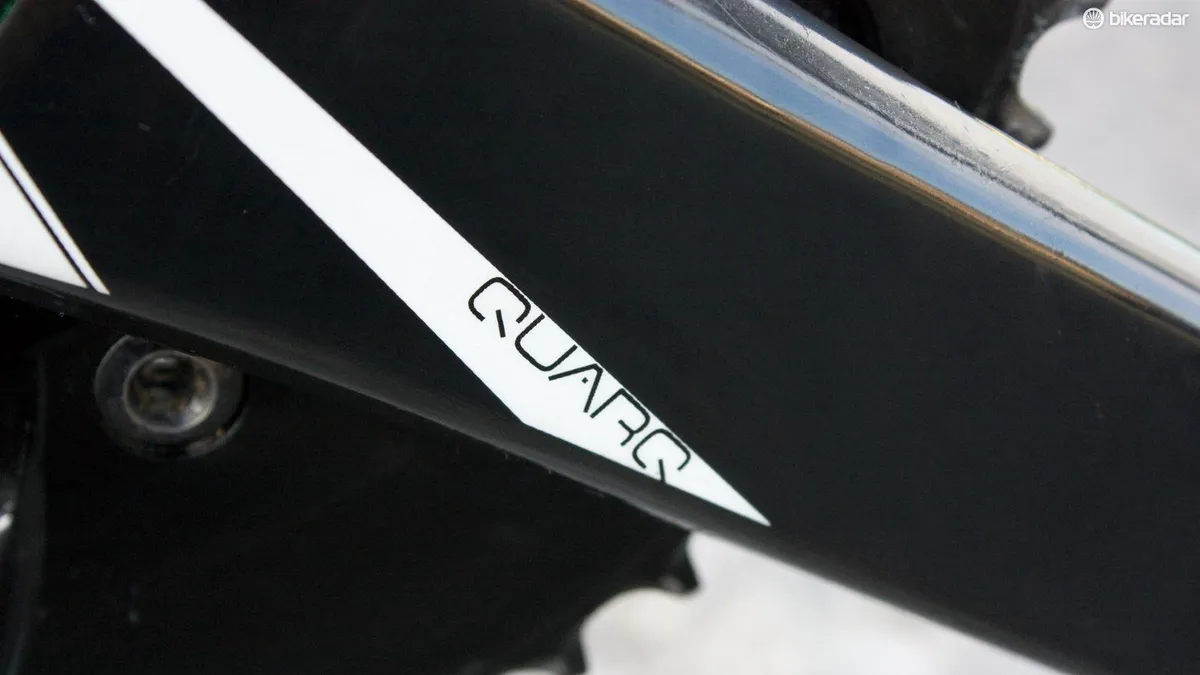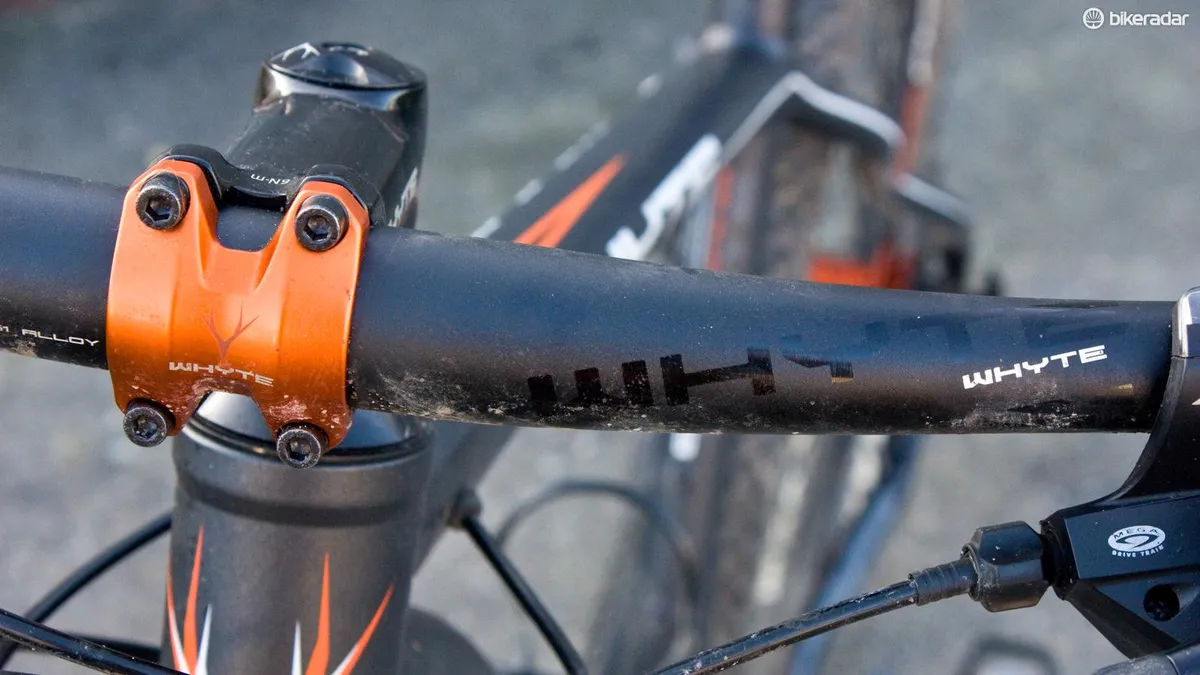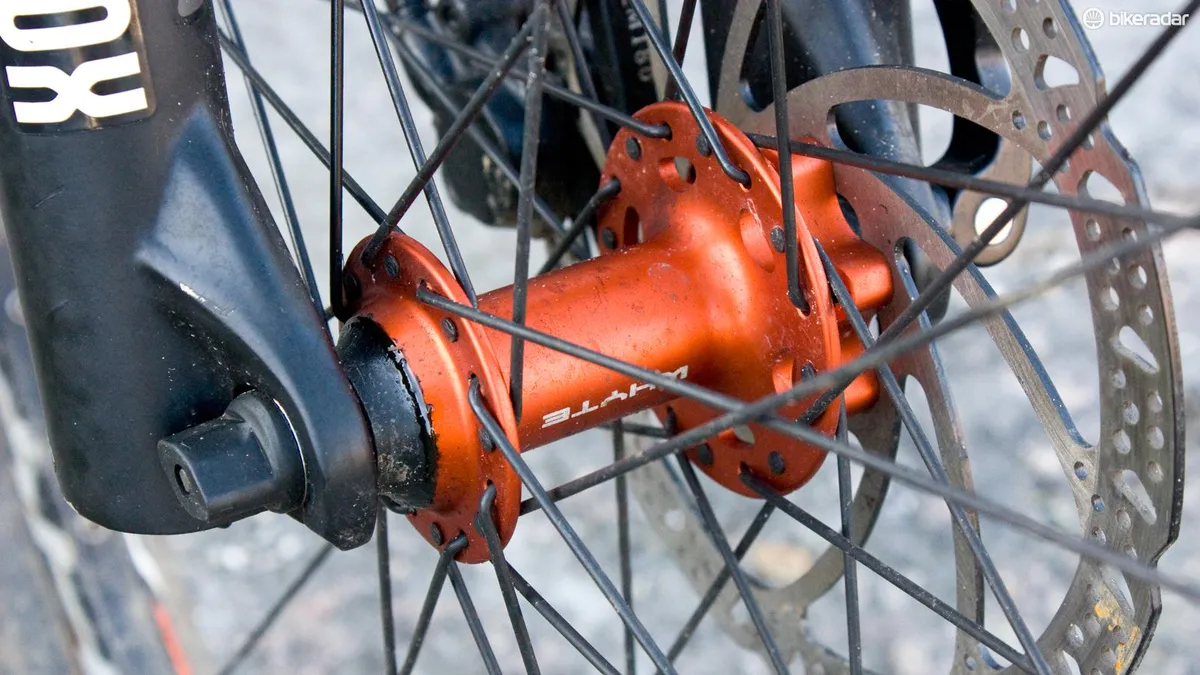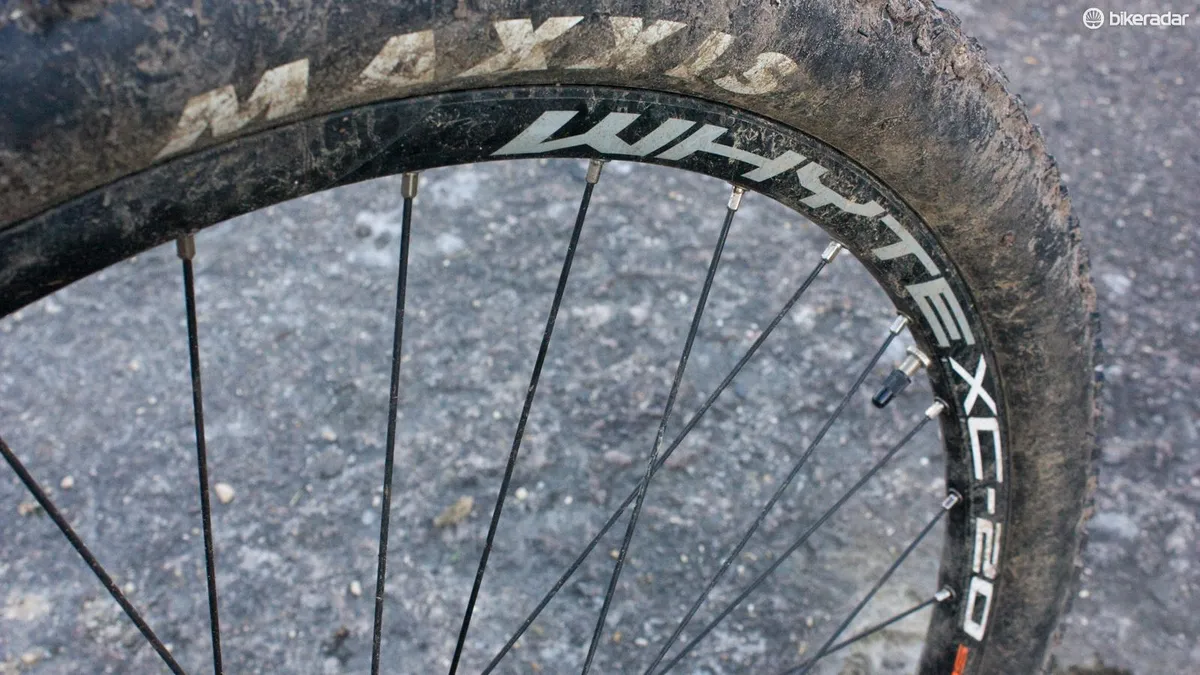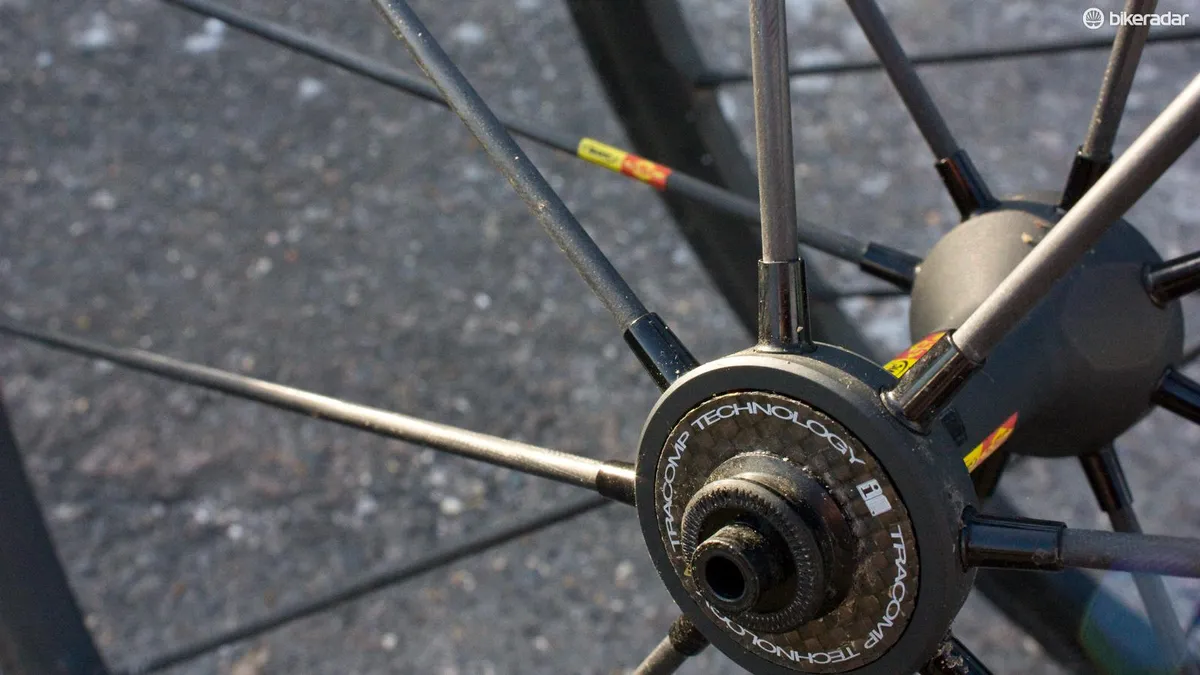Being a site all about bikes, the BikeRadar offices are always full of cycling gear. Frankly, we’re completely spoiled in a Scrooge McDuck swimming in his money bin kind of way.
If it makes you feel any better, there’s a lot of tat too, which is probably what makes finding some gear that you really connect with all the more satisfying.
Here are some of the best things I’ve used throughout 2014.
Quarq Riken 10R power meter
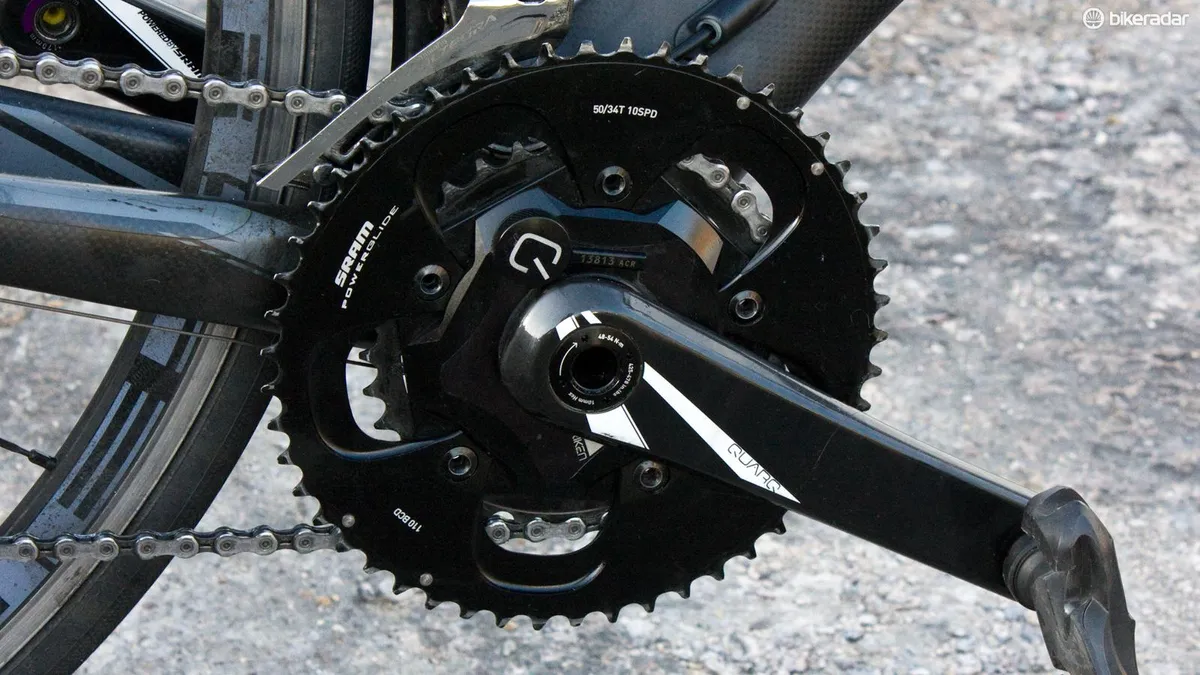
The Quarq Riken has been on my road bike for a year now and sparked my love for all things power meter-ish. Once paired with Joe Friel’s must-read The Power Meter Handbook, the Riken morphed my training from ‘just doing something’ to giving each session a specific purpose, much improving the quality of training overall. Simply seeing that little watts figure on my Garmin has made turbo sessions bearable – just having that focus has kept me going when an ever increasing part of my brain is telling me to bail from the sweaty time-slowing nightmare that is static training.
So why pick the Riken over other power meter units I’ve tested? Mainly because, although it doesn’t split data between left and right legs, the wattage does come from both – which really does count, especially for someone with wonky running-smashed triathletey legs like mine. Power in each leg does differ day to day, so I think knowing the data is truly reflecting the work you’re putting in is important.
The Riken is the entry-level option from the SRAM-owned company, so is perhaps a little heavier than more expensive units, but the weight trade-off for what it’s added to my training has been more than worth it. Our own Jeff Jones tested the Riken’s big sister – the Elsa – and praised its data consistency, but criticised temperature drift and reliability issues. The newest Riken (and the rest of Quarq’s range) has now been updated to eliminate temperature issues and uses an accelerometer instead of a reed switch for cadence, so there’s no longer any need to stick a magnet to your frame. From a reliability point of view, I’ve had absolutely no issues since installation even after travel, washing the bike or riding in rain – it’s been perfect.
If you’re into the idea of training with power, but don’t want to shell out top dollar, the Riken’s a great option – just remember to order a copy of Friel’s book to get a handle on how power can revolutionise your training too.
£949 / US$1,250 / AU$1,690 / €1,111 (not including chainrings)
Time Xpresso 2 pedals
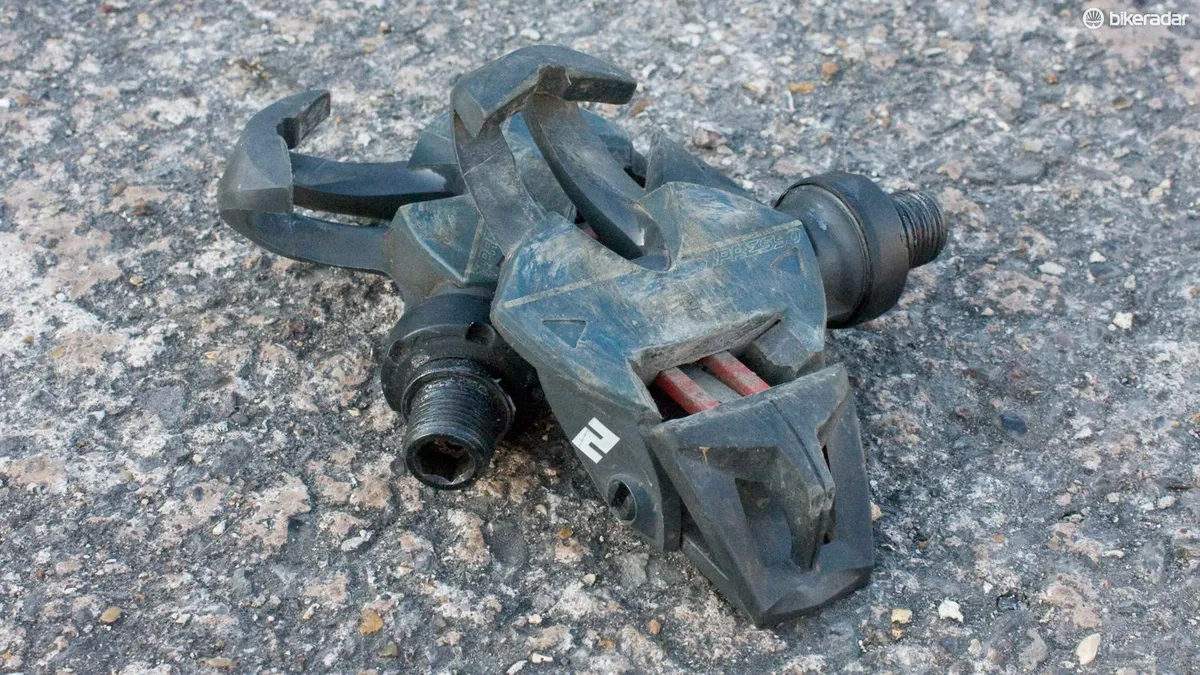
Pedals are such a key contact point with the bike that it always surprises me how unwilling people are to try something a little different. It’s not that Shimano and Look pedals don’t work well, but I’ve always found their float – plastic on metal clacking from side to side within their permitted range – a bit clunky.
Time is different – the friendlier float lets the knees turn naturally, the cleat releasing with a smooth unscrewing motion that means there’s no need to wrench your feet outwards to unclip. With the Xpresso series, Time has brought its design close to perfection, making clipping into the pedals absurdly easy thanks to a carbon blade that keeps the mechanism open until the cleat clips in. The large platform size gives a really solid base and you can even swap the cleats on each shoe to affect your q-factor.
The Xpresso 2 is the range’s entry-level pedal. With an RRP of £42.99 / US$74 / AU$79.75 – and an actual price that’s usually much cheaper, the Xpresso 2 pedals are about as cheap as road pedals come, but don’t let that put you off. The pedals offer the same performance as the pricier options, but with a hardwearing plastic composite body – actually making them some of the lightest out there. Some have criticised bearing life, but mine are still hanging in there after more than a year’s regular riding in all conditions – in fact, they’re the two bits of gear I’ve used most in 2014.
The only downside is that the pointy futuristic design is actually quite sharp at the edges, at least until you’ve blunted it by cutting up your calves a bit. Even the scars on my legs aren’t enough to make me want to swap though. The Xpresso pedals are amazing value and the only set I’m happy having under my feet on the bike.
£42.99 / US$74 / AU$79.75 / €49.95
Whyte 529 mountain bike
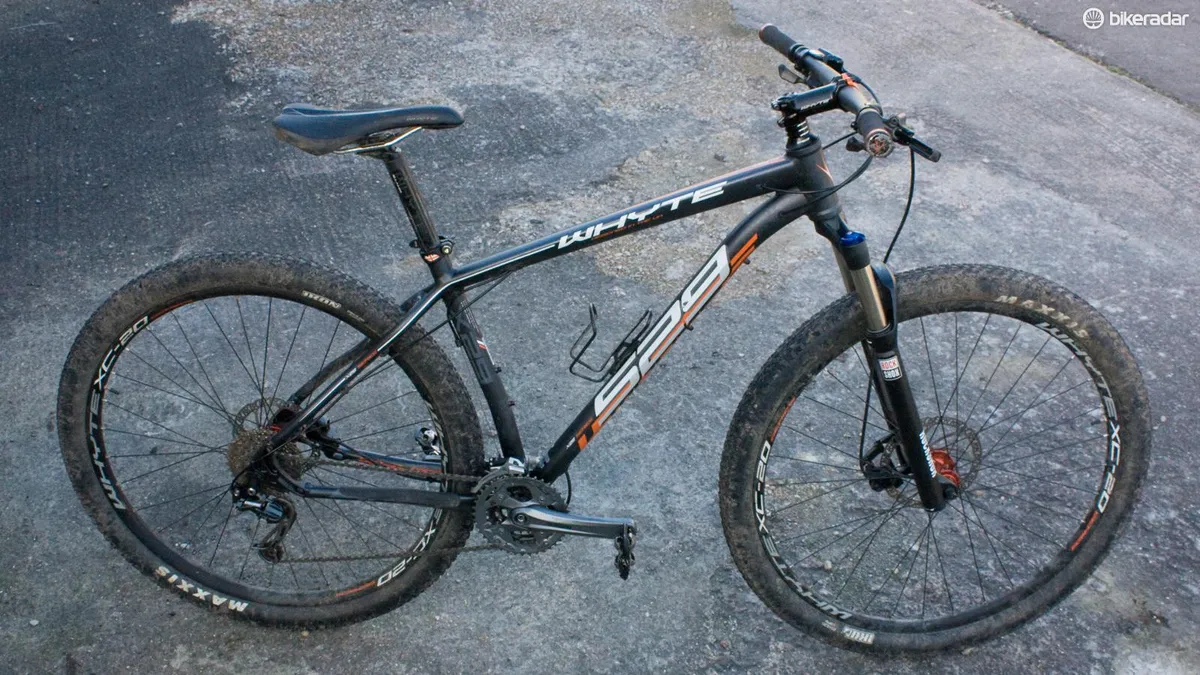
Prior to my BikeRadar days, my only exposure to mountain bikes had been renting them occasionally at trail centres – so I couldn’t wait for an excuse to try get off-road again. I wanted something beginner-friendly, but with upgrade potential and the Whyte 529 seemed to fit the bill perfectly.
The bike’s frame is exactly the same as the company’s 729 model, which costs nearly twice as much. Made from multi-butted, hydroformed 6061 T6 aluminium, it offers sorted geometry – neither too radical nor reserved – for easy-going 29er handling without offering a pedestrian ride experience.
Yes, even at £799 you might expect a little more pedigree from the components and while the simple RockShox XC-30 fork might have the right name on its decal, the simple coil spring suspension is a bit below par compared to some other brands. These are all easily upgradable minor issues though, and give me the excuse I need to raid the MTB gear cupboard - not that I’m going to any time soon as performance has been spot on.
In fact, my only major gripe with the bike so far has been the standover height; the top tube is tall enough to cause me a few squeaky-voice inducing episodes as I progress through my ‘falling off lots’ phase. I can hardly lay my own incompetence at the Whyte’s wheels though.
In short, the Whyte 529 has made this total beginner feel secure, in control and, crucially, excited about getting off road – and for that, it certainly warrants a place on my list.
£799 (UK only)
Cobb Fifty Five JOF saddle

A comfy saddle is the Holy Grail of cycling for me, and it’s one area where reviews can only help so much – after all, everyone’s backsides have their own quirks and intricacies.
As testament to this, I’ve got a box full of saddles I’ve tested and rejected in pursuit of achieving undercarriage nirvana. So it was a happy day indeed when buttocks and gooch became acquainted with Cobb’s Fifty Five JOF saddle. The JOF stands for Just Off Front – the recommended positioning of one’s bits.
For me, when it comes to time-trialling or triathlon, nothing beats the Cobb – or ‘Dr Zoidberg’, as it’s known in the office. 112-miles on the extensions never felt so comfy or free from numbness as when my derriere was perched on the end of this noseless wonder.
It might be chunky at over 300g, but the Zoidberg’s firm-yet-plush feel means you don’t need to overdo it on the padded shorts while long rails give tons of adjustability.
I’m not saying this is going to be the perfect saddle for everyone – and it chafes the thighs a bit when riding sat up – but if you’ve been time trialling with discomfort or numbness, it’s worth handing over your cash, which is exactly what I did.
£149.99 / US$209.99 / AU$239 / €TBC
Mavic R-Sys SLR wheels

Mavic’s R-Sys SLR wheels tick off two major cycling-geek criteria: they’re light and ultra stiff. Combined with Mavic’s expertise, these two elements combine to give mind bogglingly awesome uphill performance. Whether you pair them with the latest carbon-framed masterpiece or slap them into an aluminium winter training workhorse, the difference in uphill riding is instant, obvious and grin inducing.
The alloy clincher rims utilise Mavic’s Exalith braking surface, which requires a pad change but gives superb stopping power - without worrying about the surfaces overheating. It also makes a satisfying whirring sound too. The Tracomp carbon spokes are thick and won’t win any prizes in the aero category, but give the wheels their ridiculous stiffness. They’re paired with super light QRM SL hubs and bearings, while the rims come shod with Yksion Pro tyres that feature different front and rear compounds for grip at the front and low rolling-resistance at the rear. We weighed the wheels alone at a svelte 1,361g.
The newest model features a slightly tweaked rim shape for better aerodynamics, but really, the R-Sys SLRs are all about challenging yourself uphill and they make gradient-seeking adventures all the more fun. A performance enhancer is ever there was one.
£1,600 / US$2,199.90 / AU$2,649 / €1,800
Tom is a senior writer at BikeRadar.
What were some of your favourites from 2014? Sound off below in the comment section.

